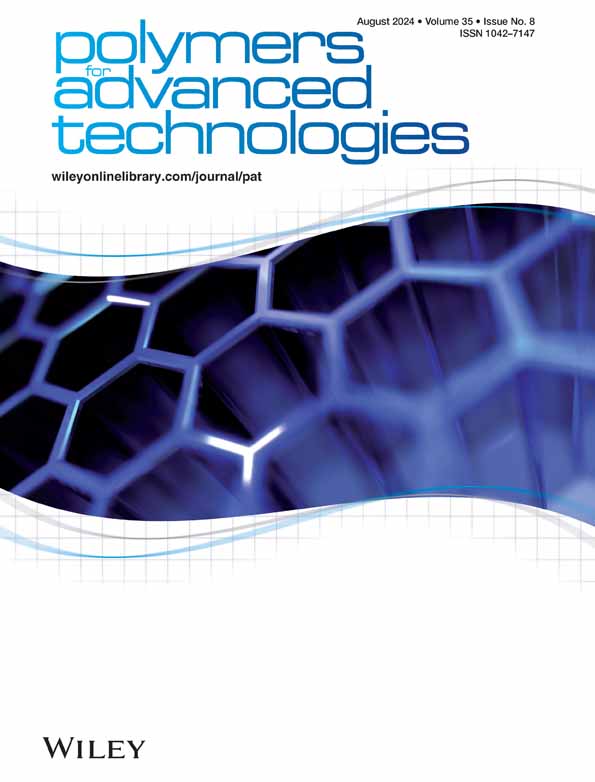通过动态 DSC 数据估算环氧树脂固化动力学参数
IF 3.4
4区 工程技术
Q2 POLYMER SCIENCE
引用次数: 0
摘要
本研究的重点是通过动态 DSC 试验确定胺环氧树脂的固化动力学参数。基辛格方程和克兰方程被用来确定作为固化动力学参数的活化能、前指数因子和反应顺序。小泽方程也用于确定反应过程中不同固化程度下的活化能变化。小泽法得出的平均活化能与基辛格活化能进行了比较。此外,还使用 T-β 外推法确定了最佳固化温度。从基辛格方程和克兰方程中获得的动力学参数被用于 nth 阶动力学模型,以预测给定时间和温度下的固化程度。Minitab 软件采用线性回归拟合方法来确定固化参数。根据拟合参数对结果进行了评估。这项研究为风力涡轮机叶片制造中使用的环氧基纤维复合材料的固化机理提供了理论依据。本文章由计算机程序翻译,如有差异,请以英文原文为准。
Parameter estimation of epoxy resin cure kinetics by dynamics DSC data
This study focused on determining the curing kinetic parameters of amine‐epoxy resin by performing dynamic DSC tests. The Kissinger and Crane equations were used to determine the activation energy, the pre‐exponential factor, and the reaction order as kinetic parameters for curing. The Ozawa equation was also used to determine the activation energy that changes at different levels of cure during the reaction. The average activation energy obtained by the Ozawa method was compared with the Kissinger activation energy. In addition, the T‐β extrapolation method was used to determine the optimum curing temperature. The kinetic parameters obtained from the Kissinger and Crane equations were used in the nth ‐order kinetic model to predict the degree of cure at a given time and temperature. The linear regression fitting method was used in Minitab software to determine the curing parameters. The results were evaluated based on the fitting parameters. This study provides a theoretical basis for the curing mechanisms of epoxy matrix fiber composites used in the manufacture of wind turbine blades.
求助全文
通过发布文献求助,成功后即可免费获取论文全文。
去求助
来源期刊

Polymers for Advanced Technologies
工程技术-高分子科学
CiteScore
6.20
自引率
5.90%
发文量
337
审稿时长
2.1 months
期刊介绍:
Polymers for Advanced Technologies is published in response to recent significant changes in the patterns of materials research and development. Worldwide attention has been focused on the critical importance of materials in the creation of new devices and systems. It is now recognized that materials are often the limiting factor in bringing a new technical concept to fruition and that polymers are often the materials of choice in these demanding applications. A significant portion of the polymer research ongoing in the world is directly or indirectly related to the solution of complex, interdisciplinary problems whose successful resolution is necessary for achievement of broad system objectives.
Polymers for Advanced Technologies is focused to the interest of scientists and engineers from academia and industry who are participating in these new areas of polymer research and development. It is the intent of this journal to impact the polymer related advanced technologies to meet the challenge of the twenty-first century.
Polymers for Advanced Technologies aims at encouraging innovation, invention, imagination and creativity by providing a broad interdisciplinary platform for the presentation of new research and development concepts, theories and results which reflect the changing image and pace of modern polymer science and technology.
Polymers for Advanced Technologies aims at becoming the central organ of the new multi-disciplinary polymer oriented materials science of the highest scientific standards. It will publish original research papers on finished studies; communications limited to five typewritten pages plus three illustrations, containing experimental details; review articles of up to 40 pages; letters to the editor and book reviews. Review articles will normally be published by invitation. The Editor-in-Chief welcomes suggestions for reviews.
 求助内容:
求助内容: 应助结果提醒方式:
应助结果提醒方式:


